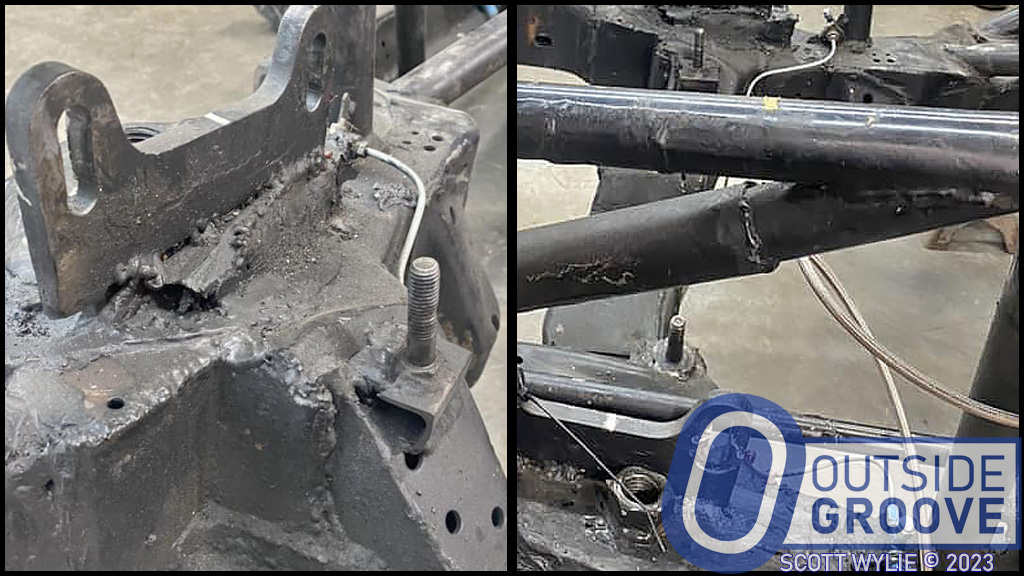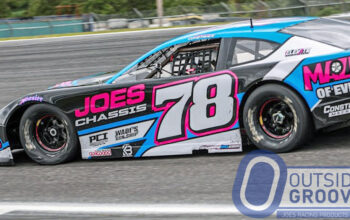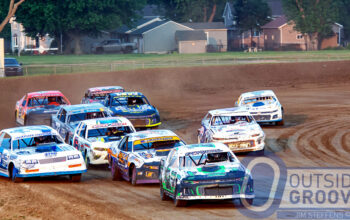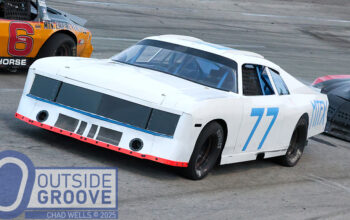Racers turn to seasoned chassis builder Scott Wylie to look over their cars. It’s not uncommon for him to find dangerously constructed race cars, as exemplified by what he recently came across.
“A young local racer brought me a super stock at the end of the season,” Wylie, of Wylie Racing Performance in Derby, New York, said. “He had me look at it with the body off so I could see what was going on. It looked like it was clipped sometime in its history, but the repair was not done properly or safely.”
Wylie found motor mounts consisting of ½″ bolts welded onto 1/16″ plate, which was then bent 90 degrees and welded to the frame. The support bars running to the clip had smaller diameter tubing inserted into larger diameter and were not welded properly.
“If that car hit the wall hard, the 600-lb. motor would have broken free from the ½″ bolts, and flown out of the car,” said Wylie. “The proper way to repair support bars would be to use 1-½″ tube inside of the 1-3/4″ tube, drill two holes through them, plug weld [the holes] and properly do a seam weld. There was no strength to the front clip the way this car was welded.”
Wylie noted that he finds issues most commonly in the entry-level classes, such as four-cylinders, street stocks, and super stocks.
“These cars are racing on big tracks at high speeds with new or young drivers who are learning,” Wylie said. “This makes it more common for wrecks to occur.”
And that’s when you need a quality chassis, with a solid roll cage, to protect the driver.
Scott Wylie also warns that you often get what you pay for. He charges around $1200 to put a new clip on a super stock, which includes the support bars and footbox from the cage forward.
“We need young racers,” Wylie said. “We don’t want to turn them away, but at the same time we don’t want them to get hurt.”
Mike Adaskaveg has written hundreds of stories since the website’s inception. This year marks his 54th year of covering auto racing. Adaskaveg got his start working for track photographer Lloyd Burnham at Connecticut’s Stafford Motor Speedway in 1970. Since then, he’s been a columnist, writer, and photographer, in racing and in mainstream media, for several outlets, including the Journal Inquirer, Boston Herald, Stock Car Racing, and Speedway Illustrated. Among Adaskaveg’s many awards are the 1992 Eastern Motorsport Press Association (EMPA) Ace Lane Photographer of the Year and the 2019 National Motorsports Press Association (NMPA) George Cunningham Writer of the Year.





